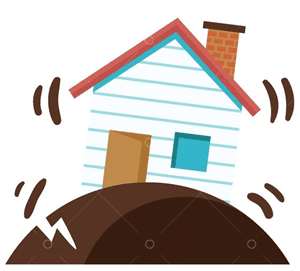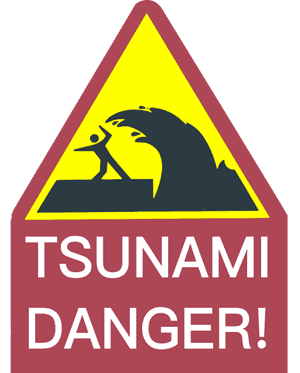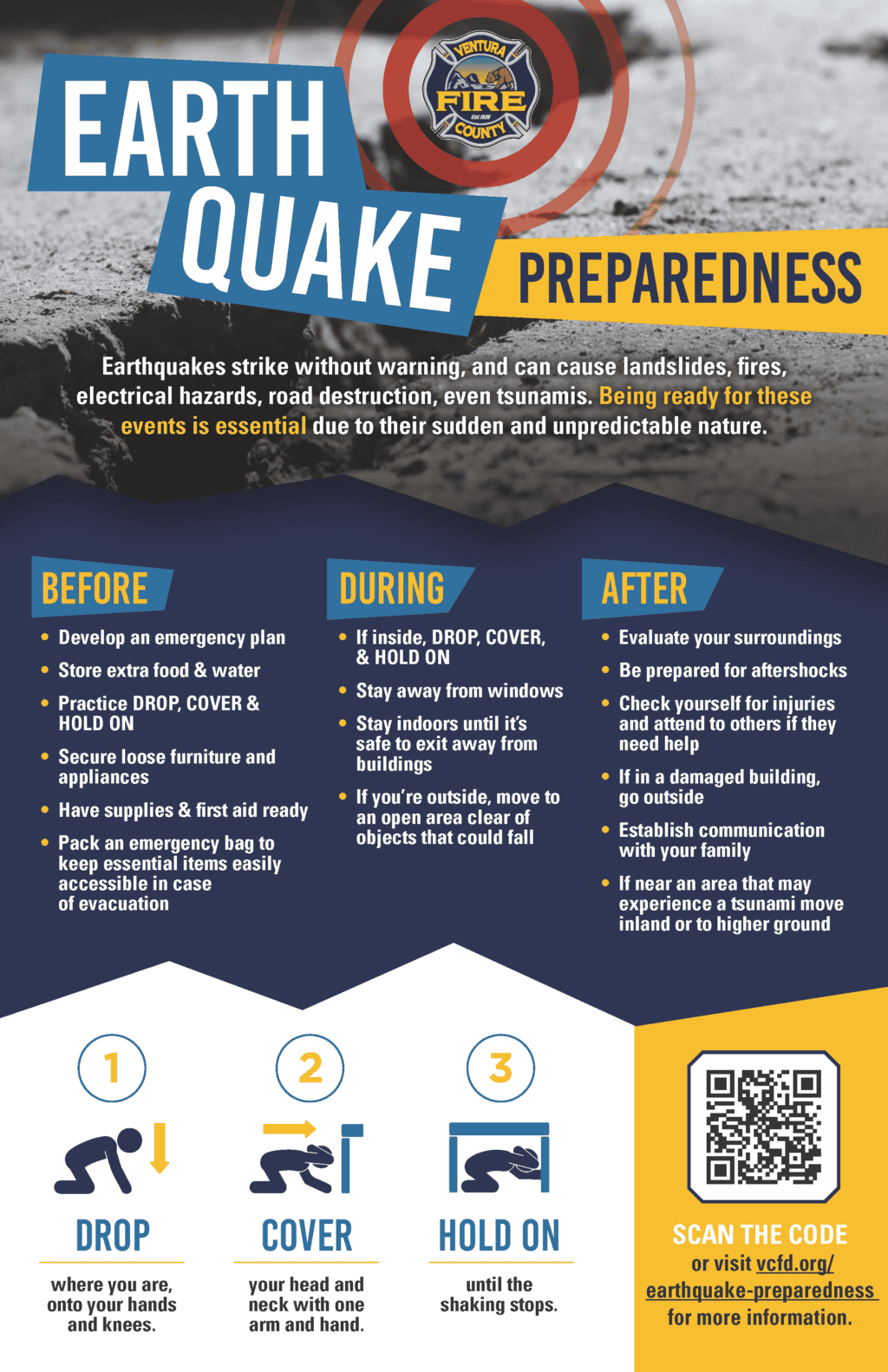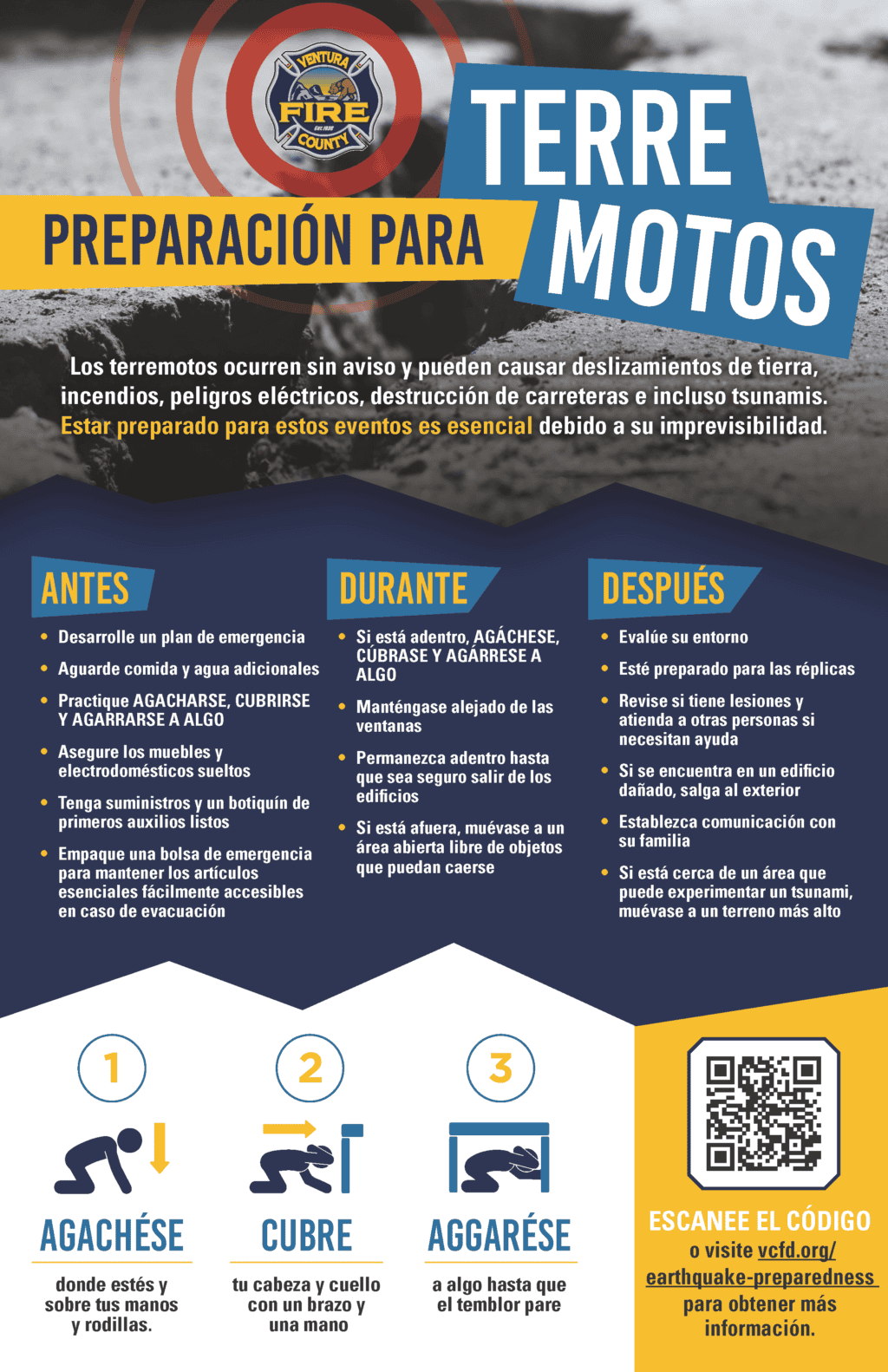Earthquake Preparedness
Did you know that a typical day in California includes more than 100 earthquakes? While most of these “quakes” are small in magnitude and cause little to no discernible damage, the risk of something closer to “the big one” is always real in Ventura County. In the unfortunate event of a major earthquake, your odds of escape and survival are directly related to how prepared you are in advance. Here are some helpful tips from VCFD and the American Red Cross to help you prepare for the arrival of an earthquake.

Prepare a Home Earthquake Plan
- Choose a safe place in every room—ideally under a sturdy table or desk or against a wall
- Practice Drop, Cover, and Hold On at least twice a year—drop under a sturdy table or desk, hold on, and protect your eyes by pressing your face against your arm
- Designate an out-of-town family contact
- Consult a professional for additional ways to protect your home
- Join the Community Emergency Response Team (CERT) program, which teaches volunteers essential skills for responding to various disasters effectively and safely.
Eliminate Hazards
- Bolt bookcases, China cabinets, and tall furniture to wall studs
- Install strong latches on cupboards
- Strap the water heater to wall studs
Prepare a Disaster Supplies Kit for Home + Car
- First aid kit and essential medications
- Canned food and can opener
- At least three gallons of water per person
- Protective clothing, rainwear, bedding, and sleeping bags
- Battery-powered radio and flashlight—and extra batteries
- Special items for infant, elderly, or disabled family members
- Bedside essentials such as flashlight and sturdy shoes
- Written instruction for how to turn off gas, electricity, and water if authorities advise you to do so
What to Do When the Shaking Begins
- Drop, Cover, and Hold On! Move just a few steps to a nearby safe place. Stay indoors until the shaking stops and you’re sure it’s safe to exit. Stay away from windows. In a high-rise building, expect fire alarms and sprinklers to go off during a quake.
- If you’re in bed, hold on and stay there, protecting your head with a pillow
- If you’re outdoors, find a clear spot away from buildings, trees, and power lines—and then drop to the ground
- If you’re in a car, slow down and drive to a clear area—and stay in the car until the shaking stops
What to Do After the Shaking Stops
- Check yourself for injuries—and protect yourself from further danger by wearing long pants, a long-sleeved shirt, sturdy shoes, and work gloves
- Check others for injuries—and provide first aid for serious injuries
- Look for and extinguish small fires. Eliminate fire hazards. Turn off the gas if you smell gas or think it’s leaking.
- Listen to the radio for instructions
- Expect aftershocks—and each time you feel one, drop, cover, and hold on
- Inspect your home for damage—and evacuate everyone if it’s unsafe
- Only use the telephone if you need to report life-threatening emergencies
Tsunami Warning
Earthquakes aren’t the only fast-developing, highly dangerous natural disaster that threatens Ventura County residents. There’s also the risk of tsunamis. A tsunami is defined as a series of waves typically caused by the displacement of the ocean floor by an undersea earthquake or landslide. There are two different types of tsunamis. A local source tsunami occurs near the California coast and takes around 15-20 minutes to arrive. A distant source tsunami occurs somewhere in the Pacific Ocean and can take hours to arrive—allowing time for an advance warning and evacuation.

What to Do in Case of Tsunami Emergency
- Ground shaking may be the only warning
- If you feel a strong earthquake in coastal areas, immediately head to high ground, inland, or a designated evacuation site
- Follow evacuation orders given by officials
- Monitor radio, television, or NOAA Weather Radio for information and updates
Prepare for a Tsunami Emergency: Emergency GO Kits
- First aid kit and reference guide
- Bottled water
- Emergency food (packaged) and snacks
- Essential medication
- Food and medication for any pets
- Portable radio, flashlight, and batteries
- Cash




